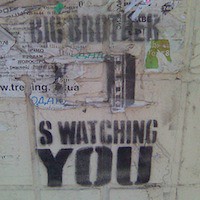Saint Patrick's Day Facts

On March 17 every year, people don green clothes, four leaf clovers, drink green beer and watch parades all over the world. The “traditional” meal is corned beef and cabbage and St. Patrick is the patron saint of Ireland and is known for driving all of the snakes out of Ireland. However, here are some facts that you may not know about Saint Patrick and the traditions surrounding the “big day”.
Did you know that St. Patrick wasn’t even Irish? He was born in Britain and was kidnapped and sent to Ireland at the age of sixteen where he became a slave to a sheep farmer. At the age of twenty-two, he escaped from his captor and rode on a pirate ship back to England and was reunited with his family. During his captivity, he became a Christian. As folklore would tell it, a voice spoke to him in his dreams, telling him to escape from his captor.
When he was back in Britain, he had another dream, in which according to his writings, an angel told him to return to Ireland as a Christian missionary. He studied to become a priest for many years and when he was finally ordained by a bishop, he returned to Ireland to witness to Christians already there and to turn pagans to Christianity. In fact, the legend of him banishing snakes from Ireland is actually an allegory for eradicating pagan religious beliefs in favor of Christianity. There are no snakes in Ireland nor have there ever been because the icy waters surrounding Ireland make it impossible for snakes to migrate there from other countries.
It is also said that Saint Patrick came up with the “Celtic cross” by putting an emblem of the sun on a Christian cross as the sun is an important icon to the Irish then because most of them celebrated Pagan beliefs and ideologies. The emblem of the sun would make reverence to the cross more comely to the Irish. Since they also celebrated certain holidays with fire, Saint Patrick also started celebrating Easter with bonfires.
Other facts about the holiday include that the original traditional meal for the holiday was Irish bacon and cabbage but since bacon was expensive, Irish immigrants in New York borrowed the idea from their Jewish counterparts to use the much cheaper corned beef. The first Saint Patrick’s Day parade was in New York City as well and today the parade route is a mile and a half long and more than 150,000 people participate in the parade that goes up Fifth Avenue from 44th Street to 86th Street and the parade allows no vehicles or floats.
Did you know that St. Patrick wasn’t even Irish? He was born in Britain and was kidnapped and sent to Ireland at the age of sixteen where he became a slave to a sheep farmer. At the age of twenty-two, he escaped from his captor and rode on a pirate ship back to England and was reunited with his family. During his captivity, he became a Christian. As folklore would tell it, a voice spoke to him in his dreams, telling him to escape from his captor.
When he was back in Britain, he had another dream, in which according to his writings, an angel told him to return to Ireland as a Christian missionary. He studied to become a priest for many years and when he was finally ordained by a bishop, he returned to Ireland to witness to Christians already there and to turn pagans to Christianity. In fact, the legend of him banishing snakes from Ireland is actually an allegory for eradicating pagan religious beliefs in favor of Christianity. There are no snakes in Ireland nor have there ever been because the icy waters surrounding Ireland make it impossible for snakes to migrate there from other countries.
It is also said that Saint Patrick came up with the “Celtic cross” by putting an emblem of the sun on a Christian cross as the sun is an important icon to the Irish then because most of them celebrated Pagan beliefs and ideologies. The emblem of the sun would make reverence to the cross more comely to the Irish. Since they also celebrated certain holidays with fire, Saint Patrick also started celebrating Easter with bonfires.
Other facts about the holiday include that the original traditional meal for the holiday was Irish bacon and cabbage but since bacon was expensive, Irish immigrants in New York borrowed the idea from their Jewish counterparts to use the much cheaper corned beef. The first Saint Patrick’s Day parade was in New York City as well and today the parade route is a mile and a half long and more than 150,000 people participate in the parade that goes up Fifth Avenue from 44th Street to 86th Street and the parade allows no vehicles or floats.

Related Articles
Editor's Picks Articles
Top Ten Articles
Previous Features
Site Map
Content copyright © 2023 by Vance Rowe. All rights reserved.
This content was written by Vance Rowe. If you wish to use this content in any manner, you need written permission. Contact Lane Graciano for details.







